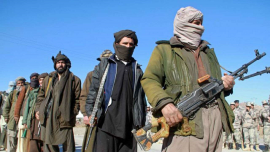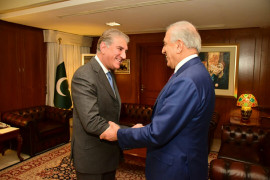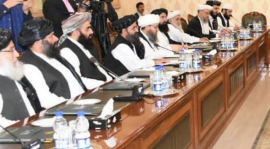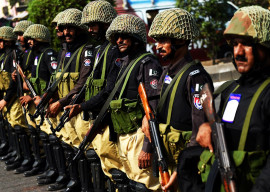
Postcolonial writers and academics like Gayatri Spivak and Lila Abu-Lughod have long been highlighting Western attempts to save “brown women from brown men”, which have been used alongside the rhetoric of development (and earlier the aim of “civilising the savage”) to justify external interventions and outright occupation. Such cynicism concerning the underlying motivations for outrage against the Taliban’s repression of women is by no means meant to justify the brutality of the Taliban rule. Instead, it aims to reveal how focusing on the need to “save” Muslim women served as a distraction from years of geopolitical wrangling (including the use of “holy warriors” to fight a proxy war against the Soviets) which enabled the Taliban regime to come to power in the first place.
Being unable to defeat the Taliban, the US has grudgingly opted for a political solution. Yet, big questions now remain about the structure of power in Afghanistan after the US withdraws. Neo-Taliban reassurances concerning Afghan girls being allowed to go to school in the future notwithstanding, it is worth taking note of how much women’s empowerment has taken place in Afghanistan since 2001, and how Afghan women feel, having spent over 18 years in a country with active coalition forces working to support a government structure propped up by them.
The US alone has spent vast amounts of resources in providing security and development in Afghanistan. According to the Cost of the War Project at Brown University, Congress approved about one trillion dollars for Afghanistan as well as for Pakistan.
This external assistance has enabled 3.5 million girls to now be enrolled in school. Yet, a similar number of school-aged children are still out of school, majority of whom are girls. School retention rates also are dismal, and major concerns exist about the quality of education being provided across the country.
A USAID project, which was billed as the world’s biggest programme ever designed purely for female empowerment, has been deemed a complete failure by the US government’s Special Inspector General for Afghan Reconstruction. Women’s groups have also been repeatedly pointed out how projects meant to empower Afghan women have been poorly designed, and how much of the money allocated to them has been going towards meeting administrative costs and paying American contractors. US aid to Afghanistan will probably decrease sharply after it has physically pulled out of the country.
Conversely, neighbouring states, including Pakistan, are primarily concerned with safeguarding their own influence in Afghanistan after the impending US withdrawal. Neither the US, nor any of its neighbouring countries have made any serious effort to compel rival Afghan groups to agree to a basic framework that ensures that the rights of ordinary citizens and Afghan women would be protected.
It is thus not surprising that nearly two decades into a war touted as “a fight for the rights and dignity of women”, Gallup surveys indicate that Afghan women are the most unhappy women in the world. With 80% of them out of the workforce and 91% with a primary education or less, Afghan women today are fearfully watching the Taliban’s grip tighten over their country. The percentage of Afghan women who say they would like to leave Afghanistan has nearly tripled since 2016, and for the first time, significantly more women (47%) than men (35%) want to leave their home country.
Given the political turmoil and the regional insecurities which will invariably be unleashed after the impending US withdrawal from the country, the fate of ordinary Afghans, and especially Afghan women and girls, unfortunately remains as precarious as ever.
Published in The Express Tribune, October 25th, 2019.
Like Opinion & Editorial on Facebook, follow @ETOpEd on Twitter to receive all updates on all our daily pieces.














































COMMENTS
Comments are moderated and generally will be posted if they are on-topic and not abusive.
For more information, please see our Comments FAQ